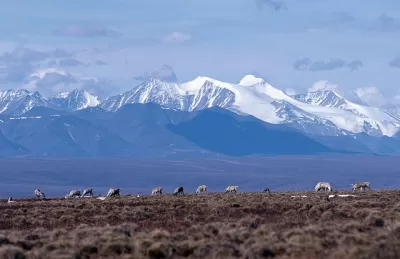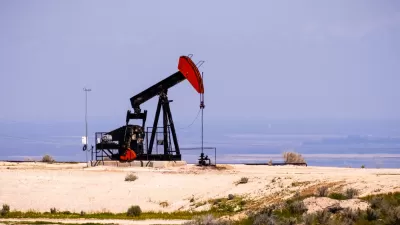When President Trump signs the tax-cutting bill, Sen. Lisa Murkowski (R-Alaska) will have achieved a family dream of opening up the pristine refuge, created 37 years ago, to drilling.

"The provision was added [to H.R. 1: Tax Cuts and Jobs Act] at the behest of Alaska’s senior senator, Lisa Murkowski, and, though it has nothing to do with tax policy and nearly had to be eliminated for parliamentary reasons, in the end it managed, stowaway-style, to cling to the legislation," reports Elizabeth Kolbert for The New Yorker on December 20, 2017.
H.R. 1 passed the Congress on Wednesday and was signed by President Trump on Friday, Dec. 22.
The 19.6-million-acre refuge Arctic National Wildlife Refuge (pronounced “an-war”) was created with the signing by President Jimmy Carter of the Alaska National Interest Lands Conservation Act on Dec. 2, 1980.
Development, including resource extraction, was prohibited in all but "1.5 million acres along the Arctic Ocean, east of Prudhoe Bay, known as the 10-02 area, were left in bureaucratic limbo, neither open to drilling nor off-limits to it," explains Kolbert.
The 10-02 may or may not contain a lot of oil—estimates range widely—but it is clearly the ecological heart of the refuge, the summer breeding ground for two hundred thousand caribou and millions of migratory birds.
Sen. Murkowski's "father, former Gov. and Sen. Frank Murkowski ... attempted to usher through the same legislation," reports Ashley Killough for CNN on Dec. 20. "The bill cleared both chambers of Congress in 1995, but it was vetoed by then-President Bill Clinton."
The tax bill offered Murkowski the opportunity to "take advantage of the 51-vote threshold opportunity, avoiding the 60-vote pitfall that has taken down ANWR in the past," adds Killough.
While the heated debate normally takes center stage in Washington around ANWR votes, the emotional clashing was somewhat overshadowed this time in part because it was attached to an arguably more controversial effort.
Will oil drilling proceed in ANWR?
"The tax package instructs the Interior Department to hold two lease sales in the next seven years," reports Dino Grandoni for The Washington Post on Dec. 21.
However, it is unlikely drilling would begin soon due to inevitable lawsuits and environmental reviews, report Ari Natter and Jennifer A. Dlouhy for Bloomberg News on Dec. 20.
"It’s still an open question about whether drilling will ever happen there," said Matt Lee-Ashley, a senior fellow at the Center for American Progress and former Interior Department official. "It’s hard to image that drilling will occur in the next 10 years -- or ever."
Murkowski also made the claim that revenues from oil drilling, which she estimated at $1 billion over ten years, would also help offset the tax cut. However, just how much oil is recoverable is questionable, reports Joel K. Bourne, Jr. for National Geographic on Dec. 19. And oil companies may not even be interested in drilling there, reports Justin Worland for TIME on Nov. 6.
FULL STORY: Will the Tax Bill Finally Defeat the Arctic National Wildlife Refuge?

Montreal Mall to Become 6,000 Housing Units
Place Versailles will be transformed into a mixed-use complex over the next 25 years.

Planetizen Federal Action Tracker
A weekly monitor of how Trump’s orders and actions are impacting planners and planning in America.

DARTSpace Platform Streamlines Dallas TOD Application Process
The Dallas transit agency hopes a shorter permitting timeline will boost transit-oriented development around rail stations.

Chicago Transit: $770M Shortfall, 40% Service Cuts Loom
Despite dire warnings from transit officials, the Illinois General Assembly ended its legislative session without a solution.

Without International Immigrants, the Rural US Population Would Be Falling 58%
Census data shows that population growth in rural areas is due in large part to international migrants.

Dead End: Nine Highways Ready for Retirement
The Freeways Without Futures report describes the nation’s most promising highway removal proposals.
Urban Design for Planners 1: Software Tools
This six-course series explores essential urban design concepts using open source software and equips planners with the tools they need to participate fully in the urban design process.
Planning for Universal Design
Learn the tools for implementing Universal Design in planning regulations.
City of Mt Shasta
City of Camden Redevelopment Agency
City of Astoria
Transportation Research & Education Center (TREC) at Portland State University
City of Camden Redevelopment Agency
Municipality of Princeton (NJ)
Regional Transportation Commission of Southern Nevada





























